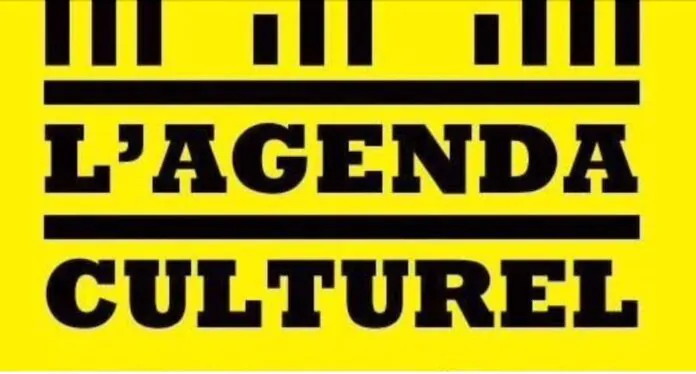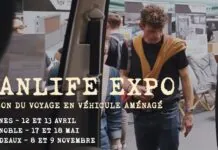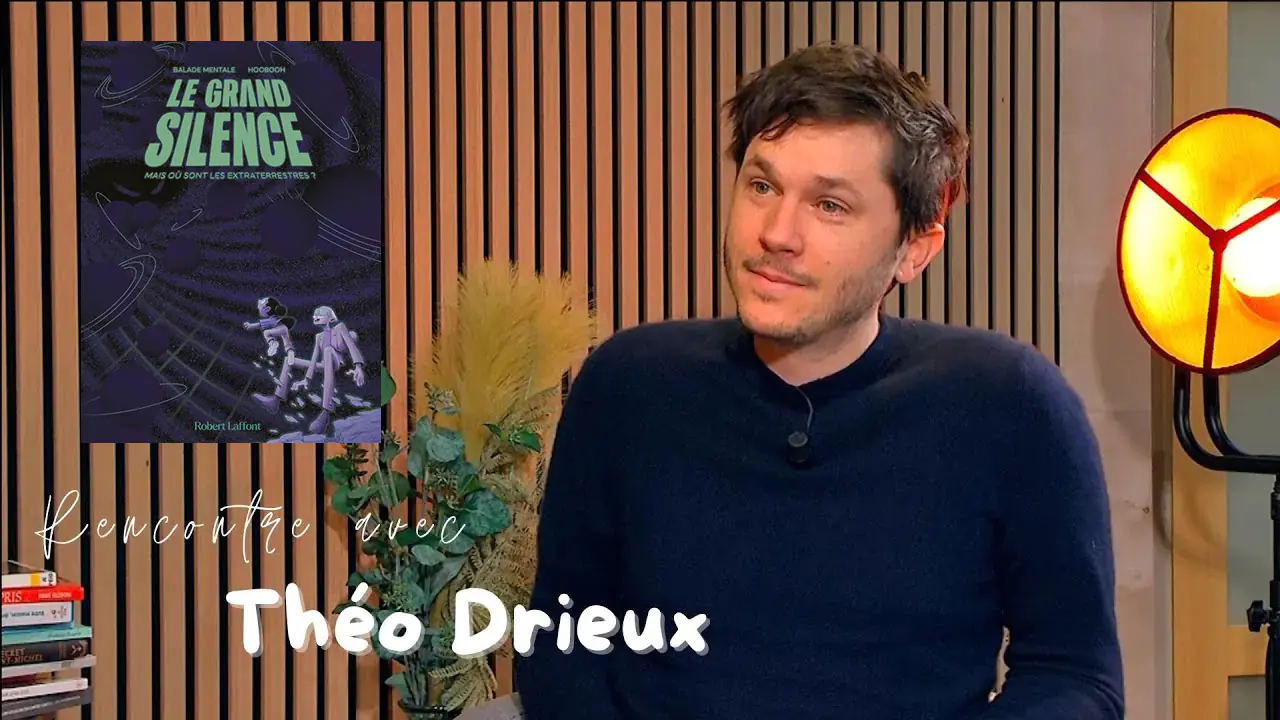Agenda culturel, sorties et loisirs en France. Découvrez les concerts, spectacles, rencontres, expositions, visites de votre ville ou département.
Cliquez sur la ville ou le département de votre choix pour afficher l’agenda dédié et/ou, comme des centaines d’autres acteurs culturels, ajoutez gratuitement en quelques secondes votre événement à notre agenda grâce à notre formulaire d’annonce
Cliquez sur le département de votre choix :
Villes :
Agen
Aix-en-Provence
Albi
Alès
Amiens
Angers
Anglet
Angoulême
Annecy
Annemasse
Antibes
Argenteuil
Arles
Arras
Asnières-sur-Seine
Athis-Mons
Aubagne
Aubervilliers
Aulnay-sous-Bois
Auxerre
Avignon
Bagneux
Bagnolet
Bastia
Bayonne
Beauvais
Belfort
Besançon
Béziers
Blois
Bobigny
Bondy
Bordeaux
Boulogne-Billancourt
Boulogne-sur-Mer
Bourg-en-Bresse
Bourges
Brest
Brive-la-Gaillarde
Bron
Cachan
Caen
Cagnes-sur-Mer
Calais
Caluire-et-Cuire
Cambrai
Cannes
Carcassonne
Castres
Cergy
Chalon-sur-Saône
Châlons-en-Champagne
Chambéry
Champigny-sur-Marne
Charenton-le-Pont
Charleville-Mézières
Chartres
Châteauroux
Châtellerault
Châtenay-Malabry
Châtillon
Chelles
Cherbourg-en-Cotentin
Choisy-le-Roi
Cholet
Clamart
Clermont-Ferrand
Clichy
Colmar
Colombes
Colomiers
Compiègne
Conflans-Sainte-Honorine
Corbeil-Essonnes
Courbevoie
Creil
Créteil
Dijon
Douai
Draguignan
Drancy
Dreux
Dunkerque
Échirolles
Épinal
Épinay-sur-Seine
Évreux
Évry-Courcouronnes
Fontenay-sous-Bois
Fort-de-France
Fréjus
Gap
Garges-lès-Gonesse
Gennevilliers
Grasse
Grenoble
Haguenau
Houilles
Hyères
Issy-les-Moulineaux
Istres
Ivry-sur-Seine
Joué-lès-Tours
La Ciotat
La Courneuve
La Roche-sur-Yon
La Rochelle
La Seyne-sur-Mer
Laval
Le Blanc-Mesnil
Le Cannet
Le Chesnay-Rocquencourt
Le Havre
Le Lamentin
Le Mans
Le Port
Lens
Les Abymes
Les Mureaux
Les Sables-d’Olonne
Liévin
Lille
Limoges
Lorient
Lyon
Mâcon
Maisons-Alfort
Mamoudzou
Mantes-la-Jolie
Marcq-en-Barœul
Marignane
Marseille
Martigues
Massy
Matoury
Meaux
Melun
Mérignac
Metz
Meudon
Montauban
Montélimar
Montigny-le-Bretonneux
Montluçon
Montpellier
Montreuil
Montrouge
Mulhouse
Nancy
Nanterre
Nantes
Narbonne
Neuilly-sur-Marne
Neuilly-sur-Seine
Nevers
Nice
Nîmes
Niort
Nogent-sur-Marne
Noisy-le-Grand
Noisy-le-Sec
Nouméa
Orléans
Palaiseau
Pantin
Paris
Pau
Perpignan
Pessac
Plaisir
Poissy
Poitiers
Pontault-Combault
Pontoise
Puteaux
Quimper
Reims
Rennes
Rezé
Rillieux-la-Pape
Roanne
Romans-sur-Isère
Rosny-sous-Bois
Roubaix
Rouen
Rueil-Malmaison
Saint-André
Saint-Benoît
Saint-Brieuc
Saint-Chamond
Saint-Cloud
Saint-Denis
Saint-Denis
Saint-Étienne
Saint-Germain-en-Laye
Saint-Herblain
Saint-Joseph
Saint-Laurent-du-Maroni
Saint-Leu
Saint-Louis
Saint-Malo
Saint-Martin
Saint-Martin-d’Hères
Saint-Maur-des-Fossés
Saint-Médard-en-Jalles
Saint-Nazaire
Saint-Ouen-sur-Seine
Saint-Paul
Saint-Pierre
Saint-Priest
Saint-Quentin
Saint-Raphaël
Sainte-Geneviève-des-Bois
Sainte-Marie
Salon-de-Provence
Sarcelles
Sartrouville
Savigny-le-Temple
Savigny-sur-Orge
Schiltigheim
Sète
Sevran
Six-Fours-les-Plages
Stains
Strasbourg
Suresnes
Talence
Tarbes
Thionville
Thonon-les-Bains
Toulon
Toulouse
Tourcoing
Tours
Trappes
Tremblay-en-France
Troyes
Valence
Valenciennes
Vandœuvre-lès-Nancy
Vannes
Vaulx-en-Velin
Vénissieux
Versailles
Vigneux-sur-Seine
Villefranche-sur-Saône
Villejuif
Villemomble
Villenave-d’Ornon
Villeneuve-d’Ascq
Villeneuve-Saint-Georges
Villepinte
Villeurbanne
Vincennes
Viry-Châtillon
Vitrolles
Vitry-sur-Seine
Wattrelos
département :
Ain
Aisne
Allier
Alpes-de-Haute-Provence
Hautes-Alpes
Alpes-Maritimes
Ardèche
Ardennes
Ariège
Aube
Aude
Aveyron
Bas-Rhin
Bouches-du-Rhône
Calvados
Cantal
Charente
Charente-Maritime
Cher
Corrèze
Corse-du-Sud
Côte-d’Or
Côtes-d’Armor
Creuse
Deux-Sèvres
Dordogne
Doubs
Drôme
Essonne
Eure
Eure-et-Loir
Finistère
Gard
Gers
Gironde
Guadeloupe
Haut-Rhin
Haute-Corse
Haute-Garonne
Haute-Loire
Haute-Marne
Haute-Saône
Haute-Savoie
Haute-Vienne
Hautes-Alpes
Hautes-Pyrénées
Hauts-de-Seine
Hérault
Ille-et-Vilaine
Indre
Indre-et-Loire
Isère
Jura
Landes
Loir-et-Cher
Loire
Loire-Atlantique
Loiret
Lot
Lot-et-Garonne
Lozère
Maine-et-Loire
Manche
Marne
La Réunion
Mayotte
Guyane
Martinique
Mayenne
Meurthe-et-Moselle
Meuse
Morbihan
Moselle
Nièvre
Nord
Oise
Orne
Paris
Pas-de-Calais
Puy-de-Dôme
Pyrénées-Atlantiques
Pyrénées-Orientales
Rhône
Saône-et-Loire
Sarthe
Savoie
Seine-et-Marne
Seine-Maritime
Seine-Saint-Denis
Somme
Tarn
Tarn-et-Garonne
Territoire de Belfort
Val-d’Oise
Val-de-Marne
Var
Vaucluse
Vendée
Vienne
Vosges
Yonne
Yvelines









